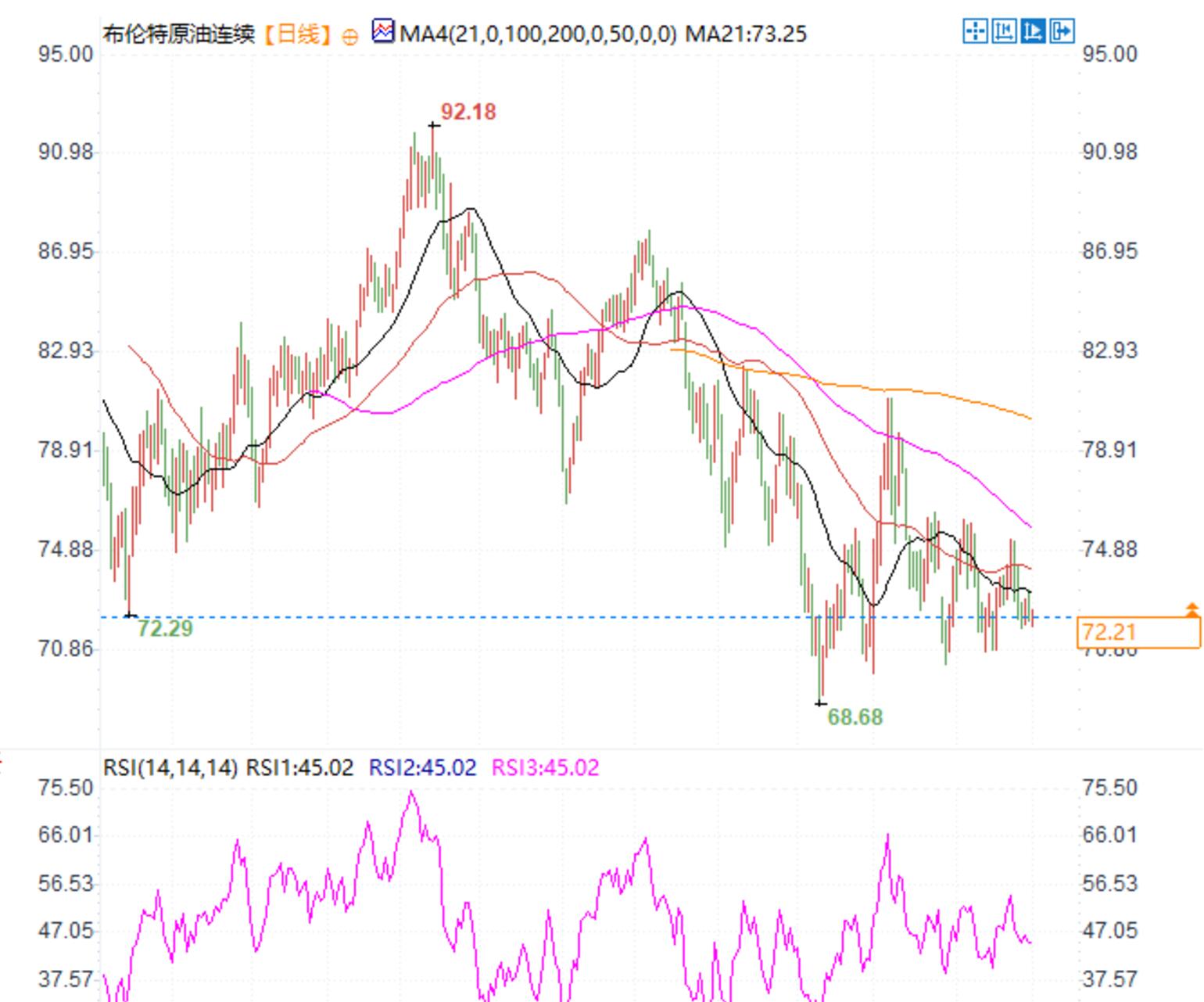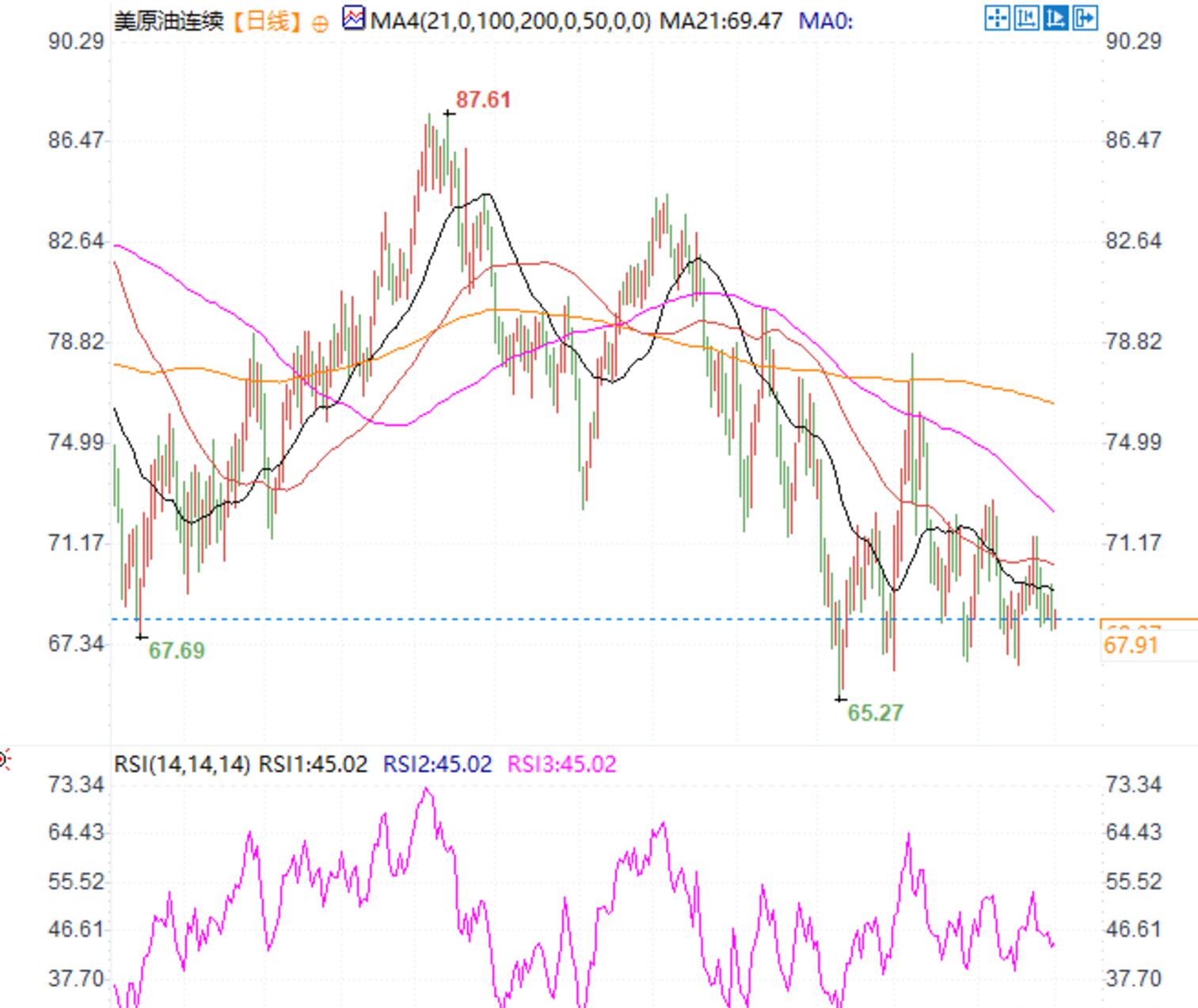Multiple factors drive oil price fluctuations, market focuses on OPEC+conference and Middle East situation
On Monday of this week, the crude oil market maintained a volatile trend, with Brent crude oil trading continuously at $72.33 per barrel, close to unchanged for the day; US crude oil (WTI) continued to contract at $68.50 per barrel, with a slight increase of 0.74%. On a fundamental level, the positive data of China's manufacturing industry and the uncertainty of the Middle East situation have jointly become the core driving force supporting oil prices, and investors' attention is gradually turning to the upcoming OPEC+conference, which will set the tone for supply policies in the coming months.
The expansion of China's manufacturing industry injects confidence into the market
The latest Caixin Manufacturing PMI data released by China in November shows that the improvement in domestic and foreign demand has pushed the index to a five month high, with new orders and export orders reaching 21 and seven month highs, respectively. This sign indicates that China's recent stimulus policies are having positive effects on the economy and may further support crude oil demand.
Renowned market analysts point out that the continuous expansion of China's manufacturing industry has given the market more confidence in the stability of demand from the world's second-largest oil consuming country. Against the backdrop of widespread market concerns that global economic weakness may suppress crude oil demand, China's resilience data has become an important variable supporting bullish sentiment.
The escalating situation in the Middle East exacerbates supply uncertainty
The tense situation in the Middle East has once again become an important driving force in the crude oil market. The ceasefire agreement between Israel and Lebanon is virtually non-existent. Several days after the agreement came into effect, both sides accused each other of violating the agreement. At the same time, Israel resumed airstrikes, leading to new casualties in southern Lebanon. The situation in Syria has not eased, and the impact of local conflicts on market sentiment is gradually expanding.
Market observers point out that geopolitical risks in the Middle East have long been a key factor driving oil price fluctuations. Although the scale of recent conflicts has not yet seriously affected the main oil export routes in the region, investors are generally concerned about the possibility of further escalation of the conflict. Any escalation in the situation between Syria and Israel could trigger a risk aversion in the market, thereby supporting crude oil prices.
OPEC+Conference Outlook: The Direction of Production Reduction Policy Becomes the Focus
As the OPEC+policy meeting approaches this week, the market is beginning to price the possible policy of delaying production increase. According to sources, OPEC+is considering postponing the production increase plan originally scheduled for January 2025 to the first quarter, in response to the current situation of sufficient global supply and uncertainty in demand prospects.
Analysis suggests that the possibility of extending the production reduction agreement could buy OPEC+more time to assess the specific pace of demand recovery. However, a Reuters survey shows that the expectation for the average price of Brent crude oil in 2025 has been lowered for the seventh consecutive time, with the latest forecast being $74.53 per barrel, lower than the current market level.
Market analysts point out that the uncertainty of OPEC+policy is another important reason for the recent fluctuations in oil prices. Investors are also concerned about the pressure that US energy policies may exert on the supply side when evaluating the potential impact of delayed production increases.


Outlook: Coexistence of Short term Fluctuations and Long term Logic
In the short term, the trend of oil prices will continue to be influenced by the situation in the Middle East and the results of the OPEC+meeting. The stabilization of Brent crude oil around $72 per barrel indicates market recognition of the support level, but the resistance above may come from expectations of sustained global supply.
In the long run, the actual progress of demand recovery and the background of global economic slowdown will jointly shape the demand side of the crude oil market, while OPEC+policies provide important guidance for the supply side. Investors need to be vigilant about the spillover effects of geopolitical risks and the possibility that the demand recovery process in 2025 may be lower than market expectations.
Overall, the current market environment exhibits complex and ever-changing characteristics. Whether oil prices can further rise depends on the development of the Middle East situation, the actual impact of OPEC+meeting decisions, and whether demand can maintain the current recovery momentum. Against the backdrop of multiple intertwined factors, the crude oil market may continue to fluctuate in the short term.
Tips:This page came from Internet, which is not standing for FXCUE opinions of this website.
Statement:Contact us if the content violates the law or your rights
